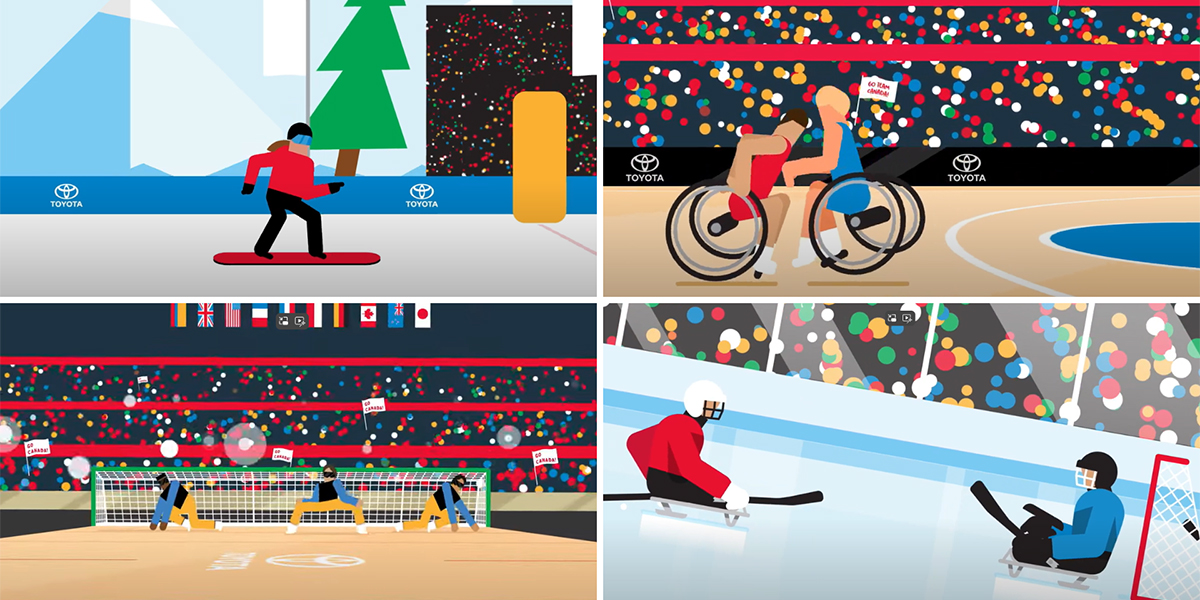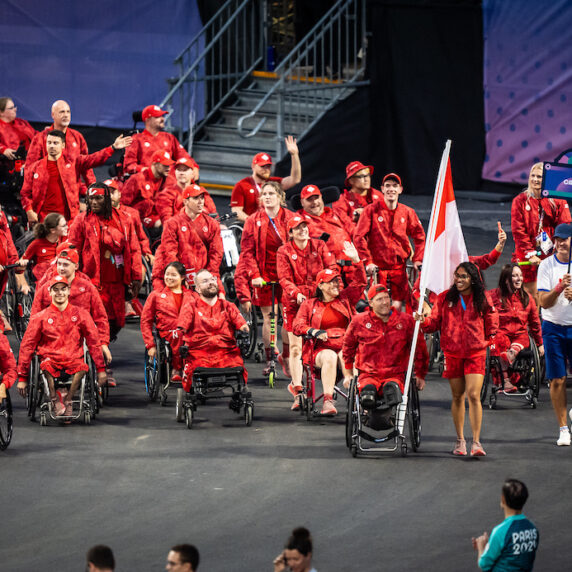Toyota Canada presents: A Guide to Paralympic Sports
As the Canadian Paralympic Team prepares for the Paris 2024 Paralympics, learn more about Paralympic sports.

With the Paris 2024 Paralympics on the horizon, Toyota Canada is here to help you understand the excitement of Paralympic sports. Our explainer videos for both Summer and Winter sports, provide you with all the information you need to cheer on the Canadian Paralympic Team with confidence. Explore these videos to learn about the various sports, their rules, and the incredible athletes who compete in them. Get ready to support the Canadian Paralympic Team and be part of the Paralympic spirit!
Canadian Sitting Volleyball Paralympian Allison Lang is here to help explain the Paralympic sport of Sitting Volleyball.
Sitting volleyball is a fast-paced Paralympic sport that is similar to traditional volleyball but adapted for athletes with physical impairments. The game is played on a smaller court with a lower net, and players must keep at least one part of their torso in contact with the ground while playing. Teams consist of six players, and the objective is to score points by hitting the ball over the net and into the opposing team’s court. The sport demands quick reflexes, strong teamwork, and exceptional skill, making it both challenging and exciting to watch.
Three-time Paralympian Iulian Ciobanu is here to help explain the Paralympic sport of Boccia.
Boccia is a precision sport designed for athletes with severe physical impairments, requiring intense concentration and strategic thinking. The game is played on an indoor court, where players aim to throw or roll leather balls as close as possible to a target ball, known as the jack. The sport can be played individually, in pairs, or in teams, and it emphasizes accuracy, control, and tactical skill. Boccia is both a challenging and captivating sport, showcasing the incredible abilities of its athletes.
Wheelchair basketball is often the hottest ticket at the Paralympic Games. It is similar to its able-bodied counterpart with some subtle differences, but the basket height remains the same as do the boundaries for three-point shooting. It is designed for athletes who have a physical impairment that prevents running, jumping, and pivoting. There are separate tournaments for men and women at the Paralympic Games.
Wheelchair basketball games have four 10-minute periods with a 15-minute pause at the half. If the game is tied at the end of the fourth period, an extra five-minute period is added. Games can have as many periods as necessary to break the tie.
Goalball is a sport exclusive to athletes with visual impairments, played by both men and women. Played in a gym court, the objective of the game is to throw the ball using a bowling motion into the opponent’s net while the opposing players try to block the ball with their bodies. The 1.25 kilogram ball has noise bells which help orientate the players.
It is an intensely unique spectator sport given the venue atmosphere and extreme concentration and silence required by the athletes. Goalball was invented in 1946 in an effort to rehabilitate veterans with a visual impairment who returned from World War II. In 1976, it was introduced to the world at the Paralympic Games in Toronto and a women’s tournament was added at the 1984 Paralympic Games. The Canadian women’s team has been particularly successful with five Paralympic Games medals including back-to-back gold in 2000 and 2004. The men won the silver in 1996.
Para snowboard was the latest sport added to the Winter Paralympic Games program in 2014. The lower limb impairment athletes (SB-LL) were featured at the 2014 Games in the snowboard cross event. At the 2018 and 2022 Paralympic Winter Games athletes competed in both the snowboard cross and banked slalom races.
Para nordic skiing includes both cross country skiing and biathlon in the Paralympic world. As is the case for alpine, there are classification for physically and visually impaired athletes. Races are held in distances from one to 20 kilometres along with relays in both sports.
Biathlon for athletes with a physical disability was first introduced at the Paralympic Games at Innsbruck, Austria in 1988. It became a medal event for men and women at the Lillehammer Games in 1994 where, for the first time Nordic skiers competed at the same venue used for the Olympic Winter Games.
Para ice hockey is the Paralympic sport version of ice hockey. Para ice hockey (formerly sledge hockey) was added to the Paralympic Winter Games in 1994. It is a fast-paced, highly physical and played by male and female athletes with a physical impairment in the lower part of the body. Instead of skates, players use double-blade sledges that allow the puck to pass beneath. Players use two sticks, which have a spike-end for pushing and a blade-end for shooting.
The goaltender may have an additional pick at the base end of his stick and may use an additional stick with a blade or wear a trapper glove. Teams are comprised of a maximum 15 players per team, including two goaltenders. Games consist of three 15-minute stop-time periods.
Canada has won medals at every Paralympic Games except 2002 and 2010 including gold in 2006.
Para alpine skiing demands extreme agility, strength, and speed, with racers reaching and exceeding speeds of 100km/hour. For all events except slalom, athletes race one run and are ranked according to the fastest time. A missed gate results in disqualification.
Originating after the Second World War, Para alpine is currently practiced in more than 40 countries, and continues to grow in popularity and accessibility. At the first Paralympic Winter Games in Örnsköldsvik, Sweden, in 1976, the slalom and giant slalom were the only two para-alpine events. Today, five para-alpine events are featured at the Paralympic Games.



"*" indicates required fields
"*" indicates required fields